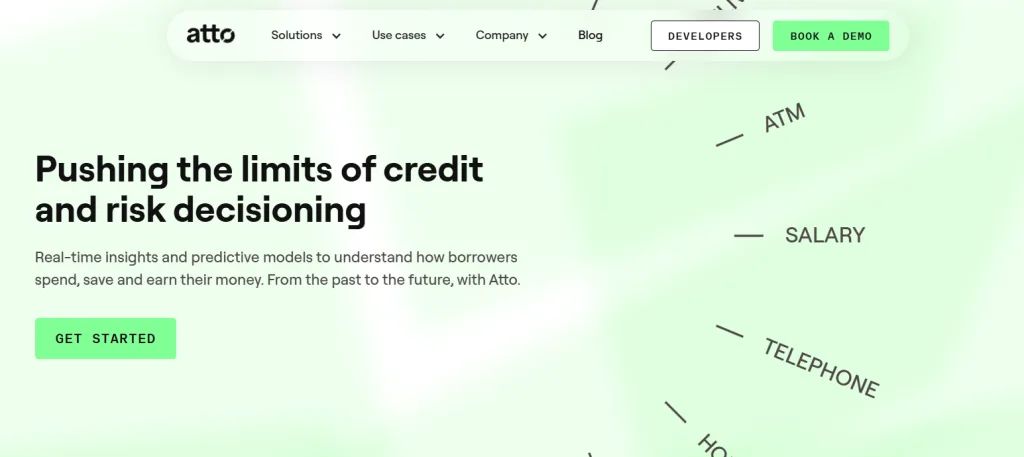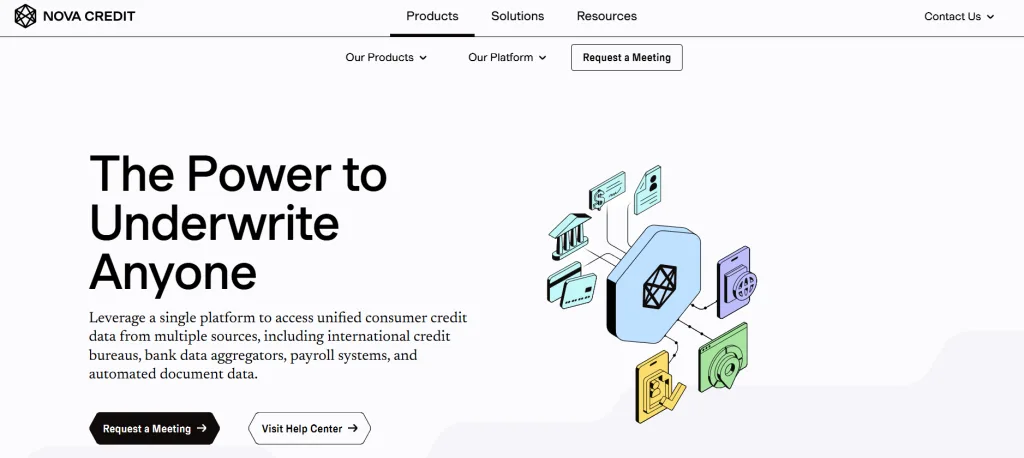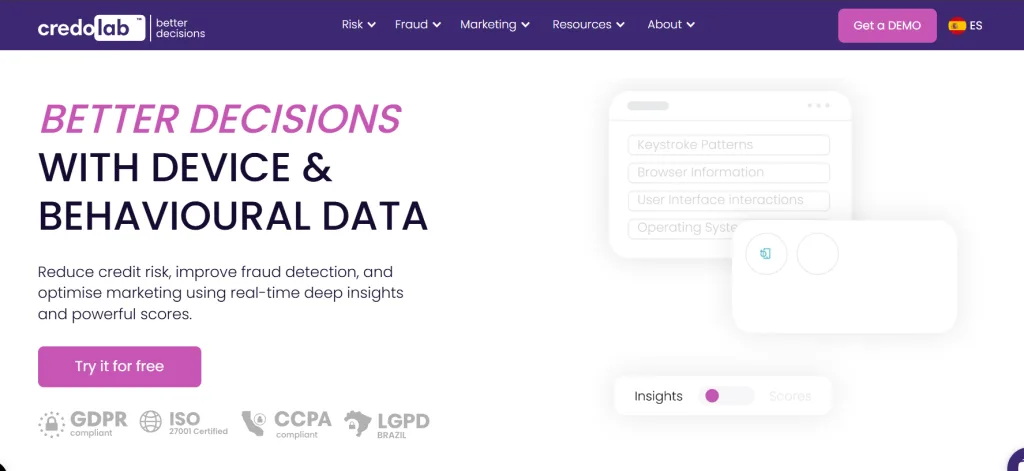Income verification has evolved from a manual form–filling process to a rapid, real–time workflow. In fact, a recent Equifax study found that a car finance lender achieved a 90 % opt‑in rate when offering Open Banking for income and expenditure checks. And with affordability under strain, 82 % of lenders now say affordability checks via live bank data are critical in today’s economy

Atto has carved out a niche with its Open Banking-first approach, helping businesses verify income and uncover risk from bank transactions. But with newer platforms offering faster deployment, broader coverage, and richer categorisation, many teams are now exploring alternatives that better fit their operational needs.
Whether you’re:
- Vetting tenants or borrowers,
- Verifying income for insurance claims,
- Or embedding risk checks directly into onboarding flows,
This guide walks you through five top-tier alternatives to Atto, each offering unique strengths in real-time verification, data categorisation, and API-driven flexibility.
Scroll on to find the right fit for your income and risk workflows in 2025.
Comparison Table: Top 5 Atto Alternatives for 2025
| Provider | Income Verification | Risk Detection | UK Focus | Best For |
|---|---|---|---|---|
| Finexer | Yes – real-time, multi-source (salary, rental, self-employed) | Yes – Affordability & Income verification | Strong – 99% UK bank coverage | Fast deployment, Instant bank data flows, usage-based pricing |
| Plaid | Yes – transactions and payroll (where available) | Partial – categorisation only | Limited – global-first focus | Multi-region fintechs needing broad infrastructure |
| Nova Credit | Yes – layered: bank, payroll, documents | Basic escalation logic | Limited – US-led product | Thin-file approvals, complex income structures |
| RiskSeal | No direct income check | Yes – behavioural, digital footprint, IP risk | Not UK-specific | Fraud detection, digital risk scoring |
| credolab | No direct income check | Yes – mobile/web behavioural analytics | Not UK-specific | Credit risk model enhancement with non-financial signals |
1. Finexer

The Fastest Way to Verify Income and Risk Without Delays or Documents
Finexer isn’t just an alternative to Atto; it’s what many UK firms are switching to when they’re done waiting on clunky systems or rigid APIs. Designed specifically for income and risk checks, Finexer helps lenders, insurers, letting agents, and payroll platforms pull real-time bank data and make decisions faster than ever.
With a single integration, you can:
- Verify income from salaries, self-employment, benefits, and rental streams
- Detect spending patterns and high-risk activity in seconds
- Flag affordability issues before they become defaults
- Trigger instant Pay by Bank requests during onboarding or payouts
- Slash compliance admin by removing the need for PDFs, payslips, or screenshots
Unlike broader platforms that serve global banks and enterprise fintechs, Finexer is built around the needs of UK-based businesses, with full 99% UK bank coverage, purpose-built workflows, and affordable, usage-based pricing that makes sense for SMEs and mid-sized teams.
What Makes Finexer Different?
- 3-5 Weeks of Hands-on Onboarding Assistance
- Zero paperwork: Clients verify income invisibly through their bank
- UK-focused: Covers nearly every UK bank with powerful categorisation
- Flexible pricing with no volume lock-ins
- Built for real-world teams in credit, claims, and compliance not just developers
Finexer is fully FCA-regulated and already used by platforms across lending, insurance, accounting, and legal. If you’re serious about turning raw bank data into faster, more confident decisions, Finexer is the one to watch.
Get Started
Connect today and see why businesses trust Finexer for secure, compliant, and tailored open banking solutions.
Try Now2. Plaid

Best for Global Access and Payroll-Backed Income Verification
Plaid is one of the most recognised names in Open Banking and for good reason. It powers financial data connections for apps like Venmo, Wise, and Monzo. When it comes to income and risk verification, Plaid offers a well-established suite that includes both transaction-based income checks and direct payroll integrations (where available).
If your business operates across multiple countries or needs to scale income checks globally, Plaid gives you the infrastructure to do it. While it may not be as tailored to UK-specific compliance or affordability workflows, it remains a strong option for developers who want breadth and reliability.
Key Features:
- Connects to 12,000+ financial institutions globally
- Income data via both transaction analysis and payroll access
- Identity verification and document upload modules
- Ongoing access to account balance and spending behaviour
- Developer-first experience with strong documentation
Where It Stands Out:
- Ideal for fintechs with multi-region user bases
- Supports more complex financial histories with multi-year coverage
- Strong developer tooling and global reputation
Plaid works best if you’re already operating at scale, or if you’re building a product with international users and want a reliable backbone for financial data.
3. Nova Credit

Best for Layered Verification Across Bank, Payroll, and Documents
Nova Credit’s Income Navigator is a powerful option for teams that need more than just bank data. It uses a smart waterfall approach to verify income: first checking Open Banking data, then pulling payroll info (where available), and finally requesting pay stubs as a last resort. This tiered method helps businesses maximise conversion without sacrificing compliance.
Nova Credit is particularly useful in sectors like lending and proptech, where some users may lack consistent bank records but still need to prove income. With its modular API and emphasis on user approval rates, it’s a solid fit for high-volume onboarding flows.
Key Features:
- Waterfall verification: bank data → payroll → documents
- Designed to increase approval rates across diverse user segments
- Supports custom rules for when to escalate to secondary checks
- API-first with flexible integration paths
- Used by credit and rental platforms with thin-file customers
Where It Stands Out:
- Boosts conversion rates without skipping compliance steps
- Great for firms dealing with gig workers or variable income
- Avoids unnecessary friction by only requesting documents when needed
Nova Credit is best suited for platforms where not every customer has a traditional income profile and where maximising completion without manual review is a priority.
4. RiskSeal

Best for Digital Footprint Risk Scoring and Fraud Prevention
If you’re less concerned with verifying income directly and more focused on understanding who you’re dealing with, RiskSeal offers a different angle. Instead of relying solely on bank or payroll data, RiskSeal analyses a customer’s digital footprint, including device data, IP signals, behavioural patterns, and more, to generate real-time risk scores.
This makes it especially valuable for lenders, insurers, and fintechs trying to detect fraud, assess trustworthiness, or evaluate thin-file applicants who may not have a detailed credit or banking history.
Key Features:
- Instant digital trust scoring based on IP, browser, and behavioural signals
- Device fingerprinting and fraud pattern detection
- Risk segmentation for both individuals and businesses
- Integrates easily via RESTful API
- Focus on high-risk onboarding flows and conversion optimisation
Where It Stands Out:
- Ideal for fraud-sensitive industries (e.g. loans, BNPL, insurance)
- Helps score users with little to no financial history
- Useful for layering on top of bank data for added risk context
RiskSeal isn’t a drop-in replacement for bank-based income verification, but it’s an excellent complementary tool if you want to add behavioural or digital risk signals to your decision-making process.
5. Credolab

Best for Enhancing Credit Models with Behavioural Insights
credolab isn’t a direct replacement for income verification tools; it’s a powerful add-on for teams that want to make better risk decisions using behavioural data. Instead of scanning bank or payroll feeds, Credolab analyses how users interact with their devices (like smartphones or web apps) to generate risk scores.
This kind of alternative data is especially useful in emerging credit segments, where traditional financial history may be limited or absent. By adding credolab to your stack, you can strengthen your credit risk models, reduce defaults, and better segment users based on trust signals you wouldn’t see from bank data alone.
Key Features:
- Behavioural scoring based on mobile and web interaction patterns
- Real-time risk insights using privacy-consented metadata
- Seamless SDK or API integration into apps and platforms
- Works well alongside Open Banking, identity, and fraud tools
- GDPR- and ISO-compliant data handling
Where It Stands Out:
- Helps score thin-file or first-time borrowers
- Offers non-financial signals that are difficult to fake
- Improves model performance when layered with income and ID data
If your product already uses Open Banking or identity tools but you want to push your scoring accuracy further, Credolab is a high-impact add-on worth considering.
Which Atto Alternative Should You Choose?
Atto is a capable Open Banking tool for income and risk checks, but it may not suit every use case in 2025. From affordability to deployment speed, these five providers offer compelling alternatives each tailored for specific needs.
- Choose Finexer if you want fast, real-time income and risk verification that works out of the box for UK businesses. With categorised transaction data, fraud insights, and embedded Pay by Bank options, Finexer is purpose-built for lending, insurance, property, and compliance workflows.
- Pick Plaid if your product spans multiple countries and requires bank or payroll data from a global audience.
- Use Nova Credit if your users vary in how they earn or declare income, and you want to minimise drop-off while staying compliant.
- Consider RiskSeal if your priority is fraud detection and trust scoring based on digital behaviour rather than financial records.
- Add credolab if you already have financial data but need to enhance scoring models with behavioural insights for improved decision accuracy.
Each tool brings a different strength to the table. But if you’re prioritising UK coverage, fast onboarding, and affordability, Finexer stands out as the most complete and practical alternative to Atto available today.
What is Atto used for in financial services?
Atto is primarily used for income and risk verification through Open Banking. It helps businesses assess a user’s financial health, detect affordability issues, and reduce fraud using real-time transaction data.
Which Atto alternative is best for UK-based platforms?
Finexer is a top choice for UK-based businesses. It offers 99% UK bank coverage, real-time income categorisation, fraud insights, and affordable usage-based pricing.
How does Finexer compare to Atto?
Finexer provides similar bank-based income and risk verification but goes further by offering Pay by Bank functionality, faster setup times, flexible pricing, and built-in affordability scoring, all tailored for UK workflows.
Talk to our team today to see how Finexer can help your business verify users faster and reduce friction in your onboarding flows.
![5 Atto Alternatives Built for Lenders, Insurers, and Letting Agents in 2025 1 Top 5 Atto Alternatives for Income & Risk Checks [2025]](/wp-content/uploads/2025/06/Atto-Alternative-jpg.webp)